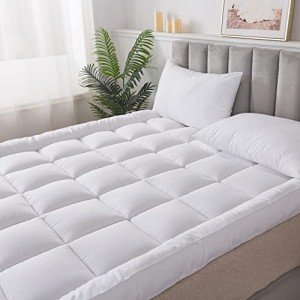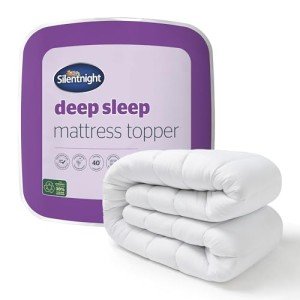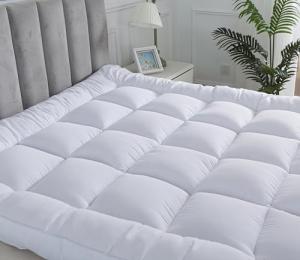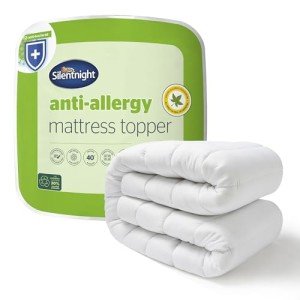Back pain has become an all-too-common complaint in today’s fast-paced lifestyle. A significant contributor to this discomfort is often linked to inadequate sleep surfaces. Many individuals turn to mattress toppers as a budget-friendly solution to enhance their sleeping experience. Among various options available, memory foam mattress toppers have gained popularity for their unique ability to alleviate back pain. This guide explores the benefits of memory foam mattress toppers, how they help with back pain, and essential factors to consider when choosing one.
Understanding Memory Foam
Memory foam, originally developed by NASA in the 1960s, is a viscoelastic material that responds to body heat and pressure. This enables it to conform to the shape of the body while providing optimal support. Unlike traditional mattress materials, memory foam redistributes body weight evenly, reducing pressure points that could lead to discomfort.
Benefits of Memory Foam Mattress Toppers
Memory foam mattress toppers offer several benefits, making them a favored choice for those suffering from back pain:
-
Pressure Relief: The soft yet supportive nature of memory foam helps to relieve pressure on key areas of the body, such as the lower back, hips, and shoulders.
-
Spinal Alignment: A memory foam topper can promote proper spinal alignment by conforming to the natural curvature of the spine, thereby reducing the risk of back misalignments.
-
Motion Isolation: Memory foam absorbs movement, meaning that if a partner shifts or gets out of bed, it will not disturb the other person. This feature enhances sleep quality, which is crucial for overall health.
-
Hypoallergenic Properties: Many memory foam toppers are made with hypoallergenic materials, which can help reduce allergens such as dust mites and mold—often responsible for sleep disturbances.
-
Temperature Regulation: Modern memory foam toppers are designed with temperature-regulating technologies to prevent overheating, keeping the sleeper comfortable throughout the night.
How Memory Foam Toppers Help with Back Pain
Memory foam mattress toppers can significantly reduce back pain through the following mechanisms:
-
Pressure Distribution: By evenly distributing body weight, memory foam reduces the pressure felt in sensitive areas such as the lower back. This alleviation allows muscles to relax and recover during sleep.
-
Support and Comfort: The firmness of the memory foam provides essential support to the lower back, which is particularly beneficial for those who spend extended time in one position.
-
Customized Fit: The material adapts to the individual’s unique body shape and sleeping position, offering personalized comfort and support. A tailored level of cushioning can be extremely beneficial for back pain sufferers.
Choosing the Right Memory Foam Mattress Topper
Before purchasing a memory foam mattress topper, several factors should be considered to ensure that it meets individual requirements:
-
Thickness: Memory foam toppers typically range from 2 to 4 inches in thickness. A thicker topper offers more cushioning and support, while a thinner one may be suitable for those who need minimal adjustment to their existing mattress.
-
Density: The density of memory foam can impact both comfort and durability. Higher density foams tend to be more supportive and less likely to sag over time.
-
Firmness Level: Different toppers offer varying levels of firmness. Individuals with back pain might prefer a medium to medium-firm topper to achieve a balance between comfort and support.
-
Cooling Features: Since memory foam can retain heat, opting for a topper with cooling technologies—such as gel-infused foam or open-cell structures—can help maintain a comfortable sleeping temperature.
-
Brand Reputation and Warranty: Researching reputable brands that offer warranties can provide peace of mind regarding the quality and longevity of the mattress topper.
Comparison Table of Popular Memory Foam Mattress Toppers
| Brand | Thickness | Density | Firmness Level | Cooling Feature | Warranty |
|---|---|---|---|---|---|
| Tempur-Pedic Cloud | 3 inches | High | Medium-Firm | Yes (Cooling 2.0) | 10-year warranty |
| Lucid Gel Memory Foam | 2 or 3 inches | Medium | Medium | Gel-infused | 3-year warranty |
| Zinus Green Tea Memory Foam | 1.5 to 4 inches | Medium | Medium | None | 5-year warranty |
| Saatva HD Mattress Topper | 3 inches | High | Medium-Firm | Temperature-regulating | 1-year warranty |
FAQs About Memory Foam Mattress Toppers for Back Pain
Q1: Can I use a memory foam topper on any mattress?
Yes, a memory foam topper can be used on most mattresses, including innerspring, latex, and even older mattresses to improve comfort and support.
Q2: How long does a memory foam mattress topper last?
Typically, a high-quality memory foam mattress topper can last between 3 to 5 years, depending on the density, care, and usage.
Q3: Do memory foam mattress toppers have an odor?
New memory foam mattresses may emit a slight odor due to off-gassing. This usually dissipates within a few hours to a few days after unboxing.
Q4: Are memory foam mattress toppers machine washable?
Most memory foam toppers have removable covers that can be machine washed. The foam itself should not be washed but spot-cleaned as necessary.
For individuals suffering from back pain, a memory foam mattress topper can offer a practical and effective solution to enhance sleep quality and comfort. By providing pressure relief, promoting spinal alignment, and ensuring overall better sleep, these toppers serve as a valuable investment in personal well-being. When choosing the right topper, factors such as thickness, density, firmness, and cooling properties should be considered to maximize benefits. With careful selection and proper maintenance, memory foam mattress toppers can potentially transform how one experiences restorative sleep.






